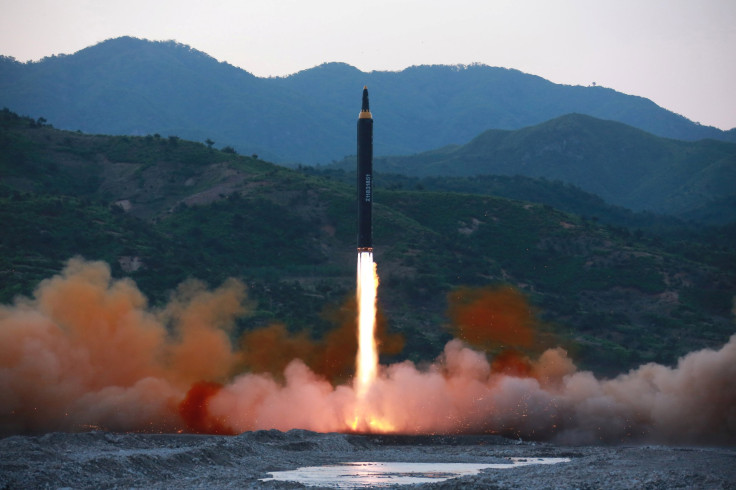North Korea Ready To Attack US? Pyongyang Claims Latest Missile Was An IRBM, South Korea Denies

North Korea successfully tested an intermediate-range ballistic missile Sunday, the reclusive country said Monday in a statement, also indicating advances in its ambitions to attack the United States. However, South Korea's military also said Monday that the missile — called the Pukguksong-2 — which was fired the previous day, is a medium-range ballistic missile (MRBM) with a range of up to 1,500 miles.
The details about the missile comes amid concerns that Pyongyang could target South Korea and U.S. amid growing tensions surrounding the reclusive nation's nuclear advancements. Following the launch, experts weighed in on the missile's make and its range as Pyongyang continues to threaten its neighbors and the West by working on missiles that can reach the U.S. mainland. Just a day before the missile launch, North Korea said it had developed the capability to strike the U.S. mainland, although Western missile experts say the claim is exaggerated.
"It's believed to be an MRBM in terms of the flight distance when launched at a normal angle," Army Col. Roh Jae-cheon, spokesman for the Joint Chiefs of Staff (JCS), told reporters about the latest missile fired by North Korea, according to Yonhap news. An MRBM has a range of 500-1,500 miles and a missile with the range of 1,500-3,400 km is usually categorized as an intermediate-range ballistic missile (IRBM).
Read: North Korea Missile Test Could Derail New South Korean President's Peace Effort
The latest missile cannot even hit Guam, about 2,100 miles away from North Korea. Guam could be one of the closest targets for North Korea as it is a refueling and staging hub for the U.S. military operations in East Asia and also home to several U.S. strategic bombers, according to Yonhap.
While commenting if North Korea's Pukguksong-2 is capable of striking Guam, the JCS official said that Kim Jong Un's regime is not there yet, citing an analysis by related authorities in South Korea.
However, North Korea claimed that the latest launch verified the reliability and accuracy of the solid-fuel engine's operation and stage separation and the late-stage guidance of the nuclear warhead, which was recorded by a device mounted on the warhead, according to Korean Central News Agency (KCNA).
"Saying with pride that the missile's rate of hits is very accurate and Pukguksong-2 is a successful strategic weapon, he approved the deployment of this weapon system for action," KCNA reported. "Viewing the images of the Earth being sent real-time from the camera mounted on the ballistic missile, Supreme leader Kim Jong Un said it feels grand to look at the Earth from the rocket we launched and the entire world looks so beautiful."
North Korea continues its testing of ballistic missiles, some of which it claims is capable of carrying a nuclear warhead, despite several warnings and strong sanctions being imposed by the United Nations.
Last week, South Korean officials said that the North's missile defense program was developing faster than expected.
North Korea warned the U.S. about its recent military drills with South Korea as well as its missile defense system, the Terminal High Altitude Area Defense system (THAAD), installed in South Korea in April. North Korea has accused the U.S. of escalating tensions with its actions and refers to its missile launches as measures to safeguard its country.
“By relentlessly bringing in a number of strategic nuclear assets to the Korean peninsula, the U.S. is gravely threatening the peace and safety and driving the situation to the brink of nuclear war,” North Korean officials said in a statement in April. “This has created a dangerous situation in which thermo-nuclear war may break out at any moment.”
© Copyright IBTimes 2024. All rights reserved.











